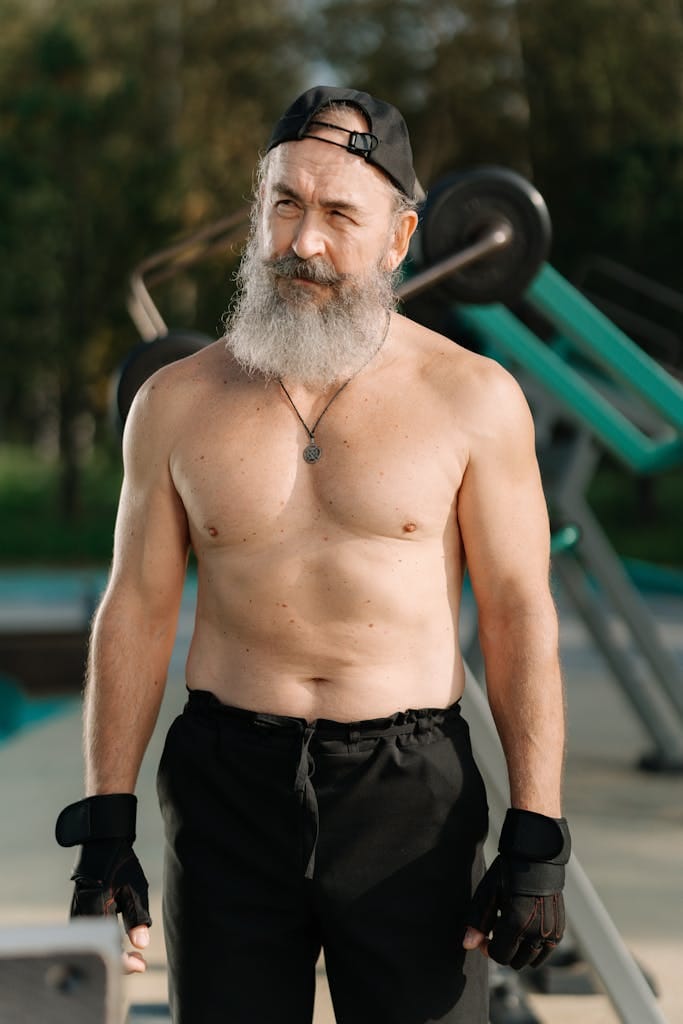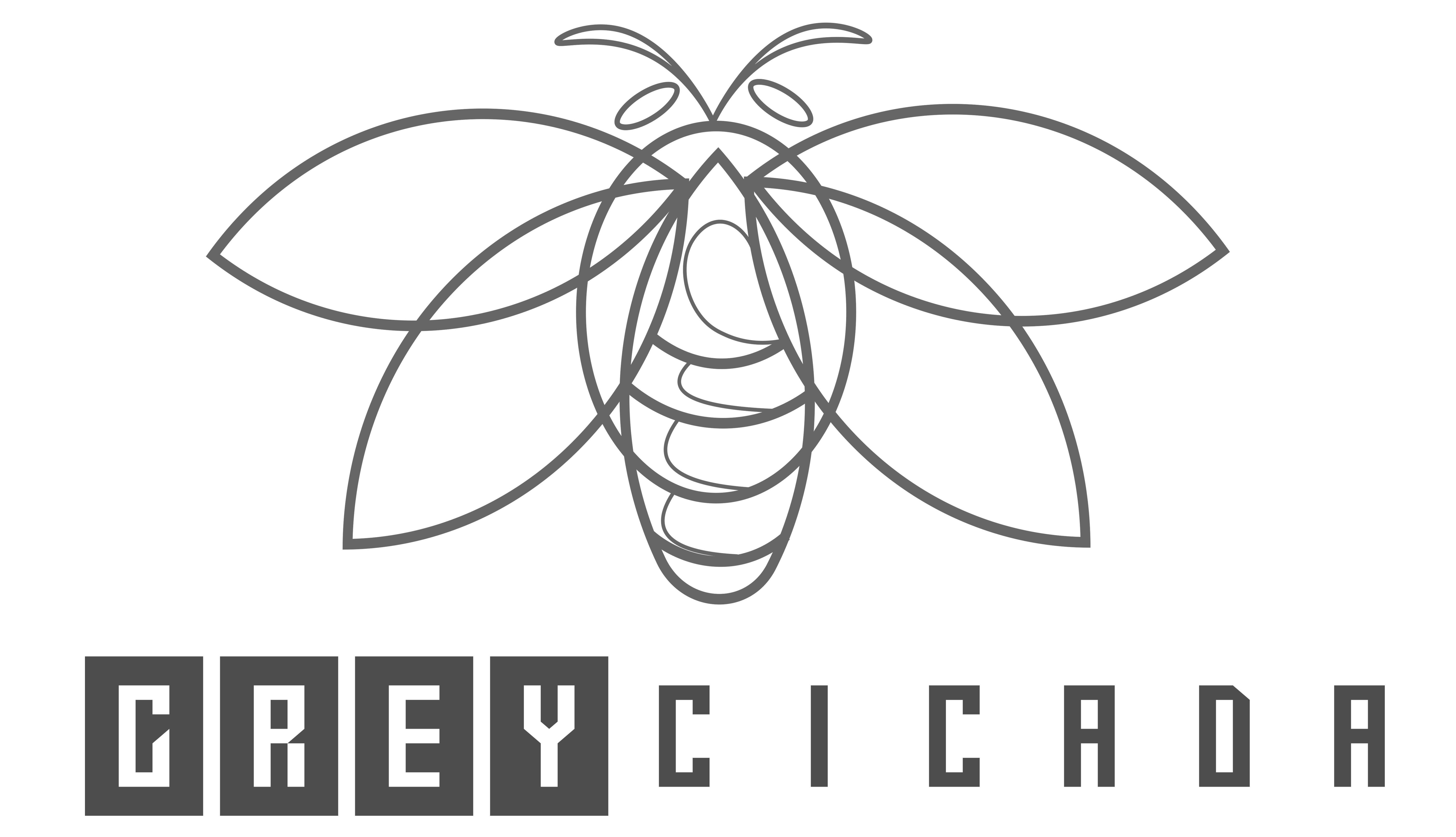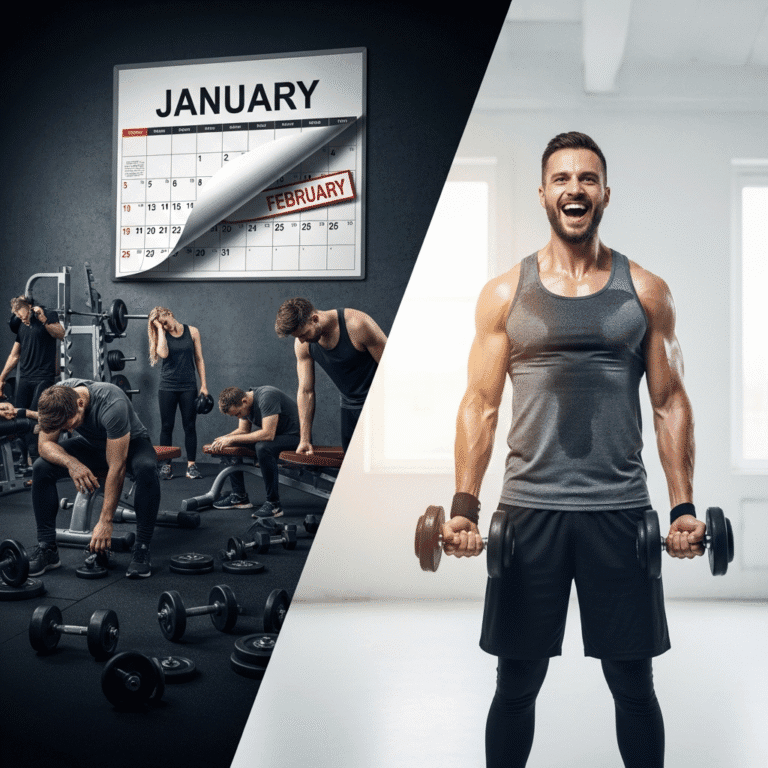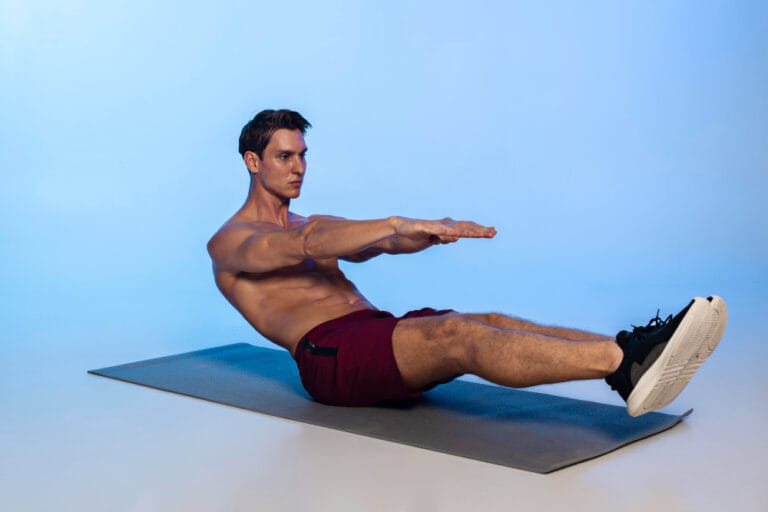FREE SHIPPING OVER $50
The Secret to Building Muscle Over 40—Without Lifting Heavy Weights
As we age, building muscle becomes more challenging, but it’s far from impossible. The good news is, you don’t need to lift heavy weights to gain muscle, especially after 40. In fact, there are several ways to build strength and size that cater to the needs of an aging body. In this article, we’ll explore the secrets to muscle growth after 40, and how you can achieve your fitness goals without heavy lifting.
Why Building Muscle After 40 is Different

By the time you hit your 40s, your body begins to undergo changes that can impact muscle growth. Testosterone levels drop, recovery times lengthen, and joint mobility may decrease. But with the right strategy, you can still build muscle effectively.
- Sarcopenia: This is the age-related loss of muscle mass, which typically starts around age 30 and progresses as you age. Sarcopenia makes it essential to focus on muscle maintenance and growth through targeted exercise.
- Slower Recovery: Your muscles don’t repair as quickly as they did in your 20s, which is why recovery should be prioritized along with exercise.
- Joint Health: Lifting heavy weights can put unnecessary stress on your joints. This is especially important if you’ve been sedentary or experienced injuries in the past.
The Secret to Building Muscle Without Lifting Heavy Weights
Now, you might be wondering: if heavy weights are off the table, how can you still build muscle? The answer lies in high-repetition, low-weight training, bodyweight exercises, and other techniques that engage muscle fibers and promote hypertrophy (muscle growth).
Here are some proven strategies:
1. Focus on Time Under Tension
One of the most effective ways to build muscle without lifting heavy weights is by increasing time under tension (TUT). This involves performing exercises slowly and deliberately, giving your muscles more time to contract and work harder. For instance, when doing a squat, lower yourself into the squat position for 3-5 seconds before standing back up. This prolonged tension encourages muscle growth even with lighter weights.
2. Bodyweight Exercises
Bodyweight exercises are an excellent alternative to heavy lifting. You can build significant muscle mass through moves like:
- Push-ups: Targeting your chest, triceps, and shoulders.
- Squats: Engaging your legs and glutes.
- Planks: Strengthening your core.
- Lunges: Working out your legs and improving balance.
The key is to perform these exercises with good form and increase the repetitions over time.
3. Resistance Bands
Resistance bands are another great tool to add muscle-building resistance without needing heavy weights. They are versatile and can be used for exercises like:
- Bicep curls
- Tricep extensions
- Chest presses
- Leg extensions
Since bands offer variable resistance, they engage muscles throughout the entire range of motion, promoting growth.
4. Progressive Overload with Light Weights
Progressive overload is the gradual increase in stress placed on your muscles. While it’s traditionally associated with heavy lifting, you can still achieve it with lighter weights by increasing reps, sets, or reducing rest time between sets.
For example, you might start with 15 reps using 10-pound dumbbells, and over time work up to 25 reps, or incorporate techniques like drop sets or supersets to increase intensity.
5. Eccentric Training
Eccentric training focuses on the lengthening phase of a movement. For instance, during a bicep curl, the eccentric phase is when you lower the weight back down. Emphasizing this part of the movement with slow and controlled reps can lead to increased muscle breakdown, which promotes growth.
6. Rest and Recovery
Building muscle after 40 also requires ample recovery time. Your muscles need more time to repair and grow, so aim for at least 48 hours of rest between working the same muscle group. Incorporating active recovery like walking or stretching can also help maintain mobility and reduce soreness.
7. Protein Intake and Diet
No matter how effective your workout routine is, without proper nutrition, building muscle will be difficult. Ensure you consume enough protein—the building block of muscle. Aim for around 0.8 to 1 gram of protein per pound of body weight daily.
Some high-protein foods to incorporate into your diet:
- Plant-based proteins like lentils, chickpeas, and tofu
- Lean meats like chicken and turkey
- Fish like salmon and tuna
- Eggs and dairy
Also, ensure you’re eating enough calories to fuel muscle growth, especially if you’re on a calorie-restricted diet.
8. Compound Movements
Instead of isolating muscles with exercises like bicep curls or leg extensions, focus on compound movements that engage multiple muscle groups. These exercises burn more calories, improve coordination, and help build muscle efficiently.
Some examples include:
- Squats
- Deadlifts
- Pull-ups
- Push-ups
9. Mind-Muscle Connection
When you exercise, it’s important to actively engage the muscle you are targeting. This is known as the mind-muscle connection. When you focus on contracting a specific muscle, you increase its activation, leading to better results.
For instance, when doing a chest press, focus on feeling the chest muscles contract rather than just pushing the weight up.
Sample Weekly Workout Plan (No Heavy Lifting)
Here’s a sample week of muscle-building exercises you can follow:
| Days | Exercise | Reps/Sets | Equipment |
|---|---|---|---|
| Day 1: Upper Body | |||
| Push-ups | 3 sets of 12-15 reps | Bodyweight | |
| Resistance band rows | 3 sets of 12-15 reps | Resistance Band | |
| Dumbbell bench press (light weights) | 3 sets of 10-12 reps | Dumbbells | |
| Bicep curls with resistance bands | 3 sets of 15 reps | Resistance Band | |
| Day 2: Lower Body | |||
| Bodyweight squats | 3 sets of 15 reps | Bodyweight | |
| Lunges | 3 sets of 12 reps each leg | Bodyweight | |
| Glute bridges | 3 sets of 15 reps | Bodyweight | |
| Leg press (light weights) | 3 sets of 12 reps | Gym leg press machine | |
| Day 3: Rest/Active Recovery | Walking, yoga, or light stretching | 30-45 minutes | No equipment |
| Day 4: Core & Stability | |||
| Plank with leg lift | 3 sets, hold for 30 seconds | Bodyweight | |
| Side planks | 3 sets, hold for 20 seconds each side | Bodyweight | |
| Bird-dogs | 3 sets of 10 reps each side | Bodyweight | |
| Cable machine woodchoppers (light weight) | 3 sets of 10 reps each side | Cable Machine | |
| Day 5: Full Body | |||
| Push-ups | 3 sets of 12-15 reps | Bodyweight | |
| Squats (using light dumbbells) | 3 sets of 12 reps | Dumbbells | |
| Resistance band rows | 3 sets of 15 reps | Resistance Band | |
| Dumbbell shoulder press (light weights) | 3 sets of 10-12 reps | Dumbbells | |
| Day 6: Rest | |||
| Day 7: Active Recovery | Light walking or yoga | 30-45 minutes | No equipment |
Key Points:
- Joint-friendly Exercises: Bodyweight movements and resistance band exercises ensure minimal joint strain.
- Light Weights: The dumbbell and gym machine exercises are designed with low weights and higher reps to avoid injury while encouraging muscle growth.
- Compound Movements: These engage multiple muscles to promote functional strength.
- Rest & Recovery: Two rest days (active recovery days with light yoga or walking) help reduce the risk of injury and promote muscle repair.
Conclusion
The key takeaway here is that you don’t need to lift heavy weights to build muscle, especially as you age. By focusing on time under tension, using bodyweight exercises, incorporating resistance bands, and eating a protein-rich diet, you can build muscle safely and effectively over 40. So, ditch the heavy weights and start your journey toward a stronger, healthier body today!
Related Articles
- How a Busy Dad Got Shredded With Just 15 Minutes a Day
- Top 10 Best Pre Workout For Muscle Gain 2024
- The 10 Best Deltoid Exercises for Building Stronger Shoulders
- Best Rear Delt Exercises with Dumbbells: A Complete Guide
- How to Do the Perfect Hex Bar Deadlift: Variations & Alternatives
- Muscular Endurance Exercises: Boost Your Stamina & Strength
- Dealing with Roid Rage Symptoms: A Step-by-Step Treatment Guide



